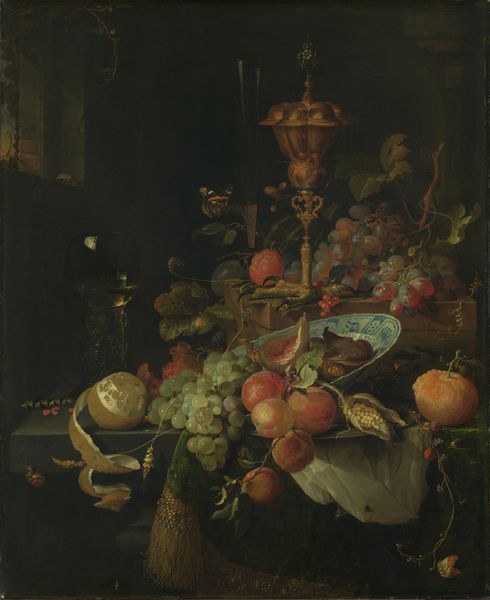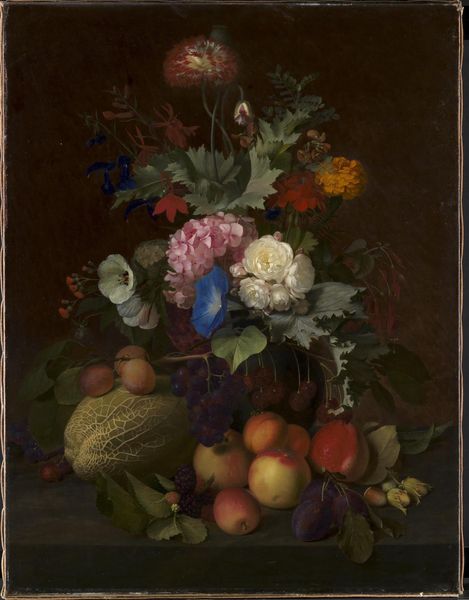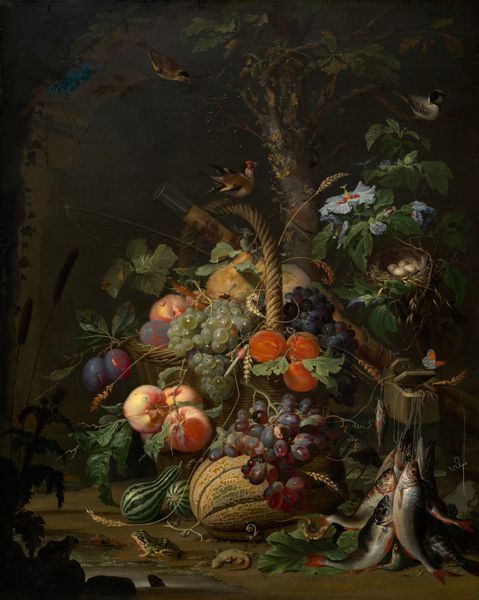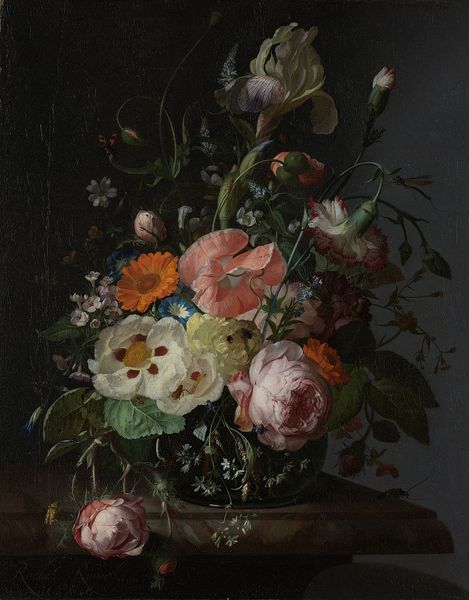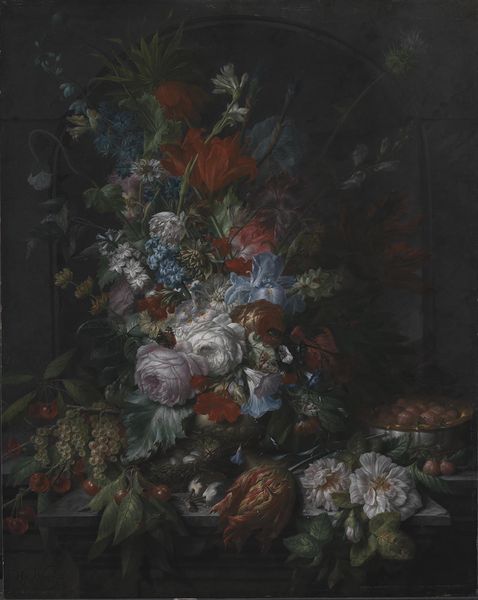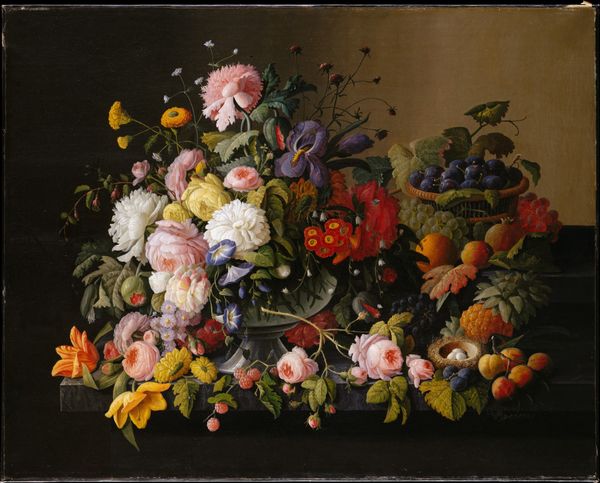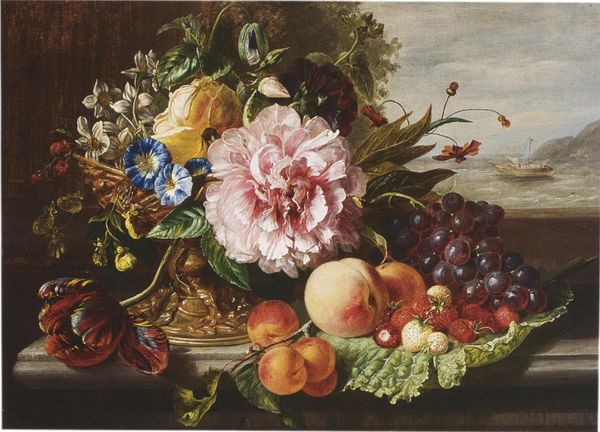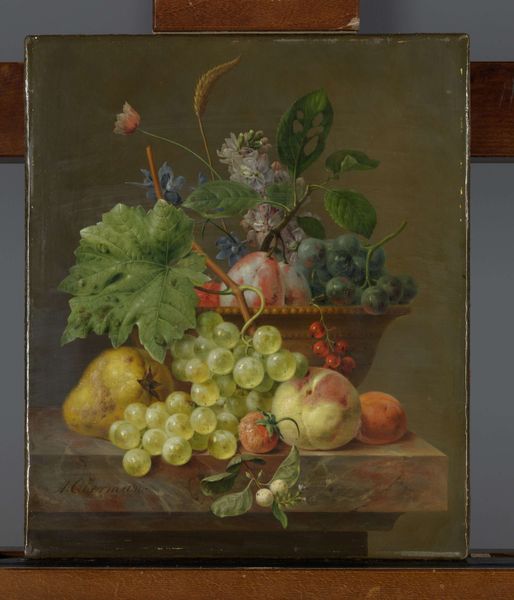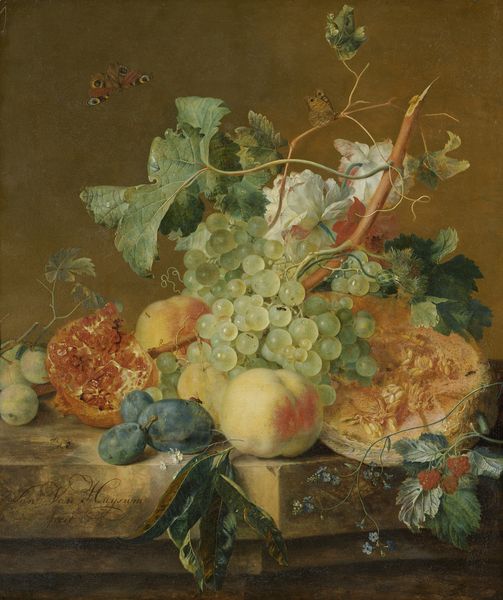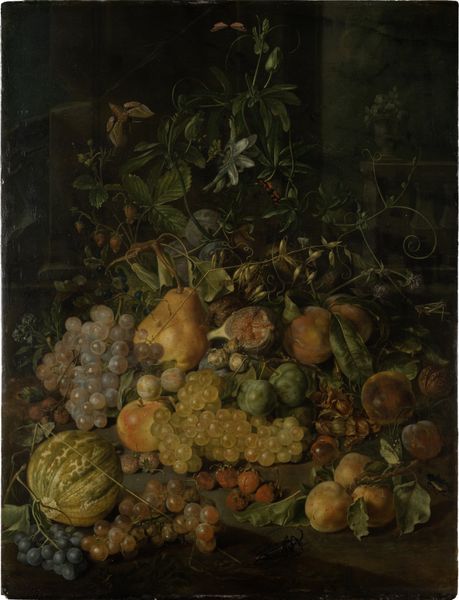
oil-paint
#
baroque
#
oil-paint
#
oil painting
#
fruit
Dimensions: height 74 cm, width 60 cm
Copyright: Rijks Museum: Open Domain
Curator: Looking at Jan Davidsz de Heem's "Festoon of Fruit and Flowers", made between 1660 and 1670 using oil paints, I'm immediately struck by the…decay. Is that weird? It’s almost hyper-real, but it's all on its way out, you know? Editor: Not at all. This work is so telling of its time—the Dutch Baroque. We have this fascination with abundance on one hand, and a clear reminder of mortality on the other. Note how de Heem painstakingly rendered each texture: the velvety bloom on the grapes, the rough skin of the lemon, and even the insect nibbling away. It reflects a culture deeply involved in global trade and deeply aware of the transience of worldly possessions. Curator: The level of detail! You can practically feel the weight of the fruit, especially that lush pomegranate bursting open, practically begging you to take a bite before it’s too late. It makes me consider what labor went into acquiring and preserving those commodities. And for whom was this artwork made? It's an opulent display, certainly. Editor: Indeed. Consider the mercantile context: The painting almost becomes a form of inventory, a celebration of wealth and trade routes. The presence of insects and decaying matter, the famous *memento mori*, adds another layer – a constant reminder of the ephemeral nature of beauty and wealth, a humble acknowledgment of our own fleeting existence amidst the grandeur. Curator: Right, these beautiful Vanitas symbols – the fragility. But back to process, what about that striking ribbon tying it all together? Its sheen looks so real. The labor to create that, to emulate those materials, it blows my mind. Editor: The bow serves as a compositional focal point and draws the eye, uniting all this materiality that has, admittedly, grabbed our attention for quite some time! In scrutinizing "Festoon of Fruit and Flowers" we see the rich interplay between artistic skill, economic circumstance, and symbolic awareness of human limitation.
Comments
rijksmuseum about 2 years ago
⋮
In 1626 this Utrecht-born painter moved to Antwerp, where he became acquainted with sumptuous and colourful Flemish still-life painting. He combined this influence with his gift for rendering nature in minute detail. This is clear to see in this floral and fruit festoon: a highly decorative entity that is nevertheless meticulously detailed. All kinds of hungry insects populate this still life.
Join the conversation
Join millions of artists and users on Artera today and experience the ultimate creative platform.

